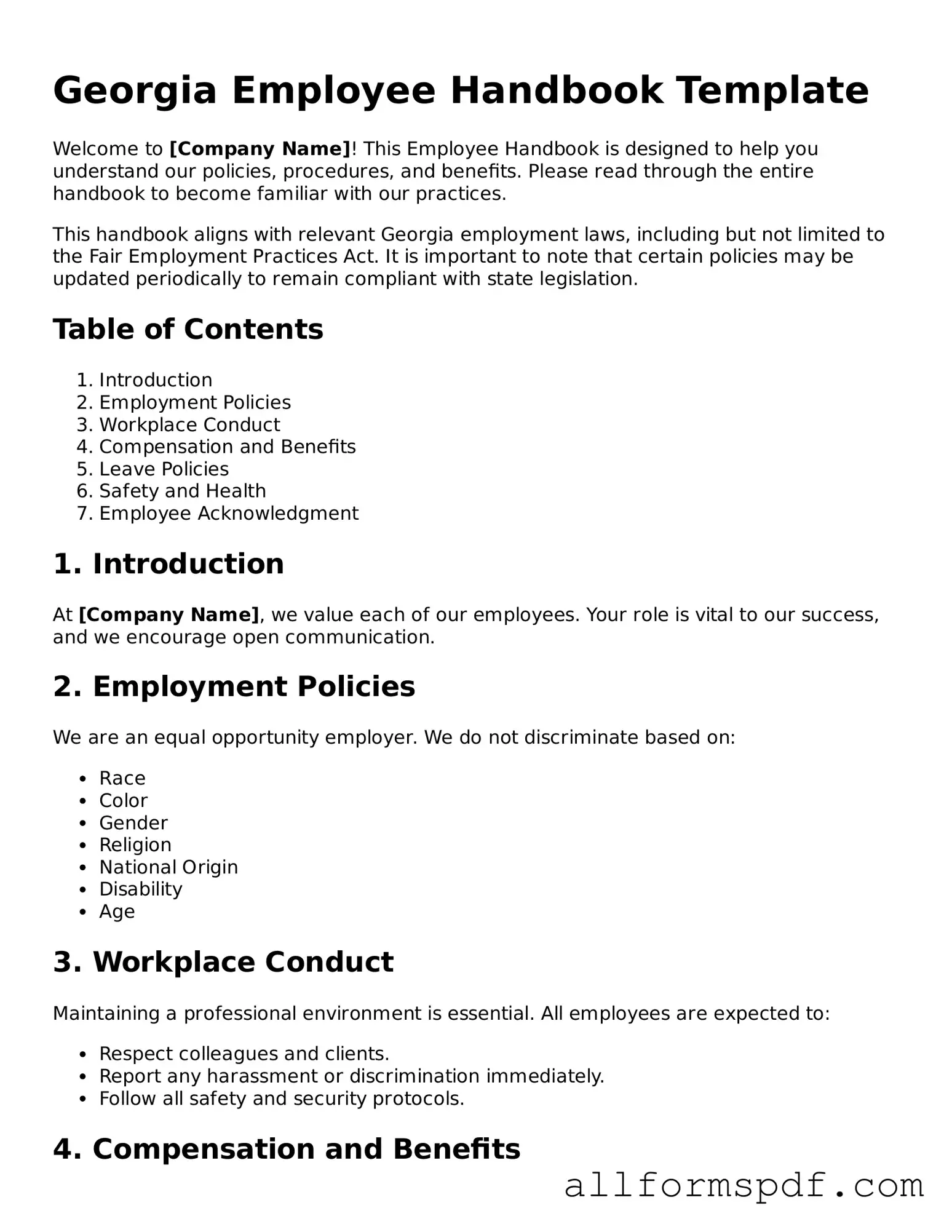Fillable Employee Handbook Form for Georgia
The Georgia Employee Handbook form is a vital document that outlines the policies, procedures, and expectations for employees within a company. This form serves as a guide, ensuring that both employers and employees understand their rights and responsibilities. By providing clear information, it fosters a positive work environment and helps prevent misunderstandings.
Create My Employee Handbook Now
